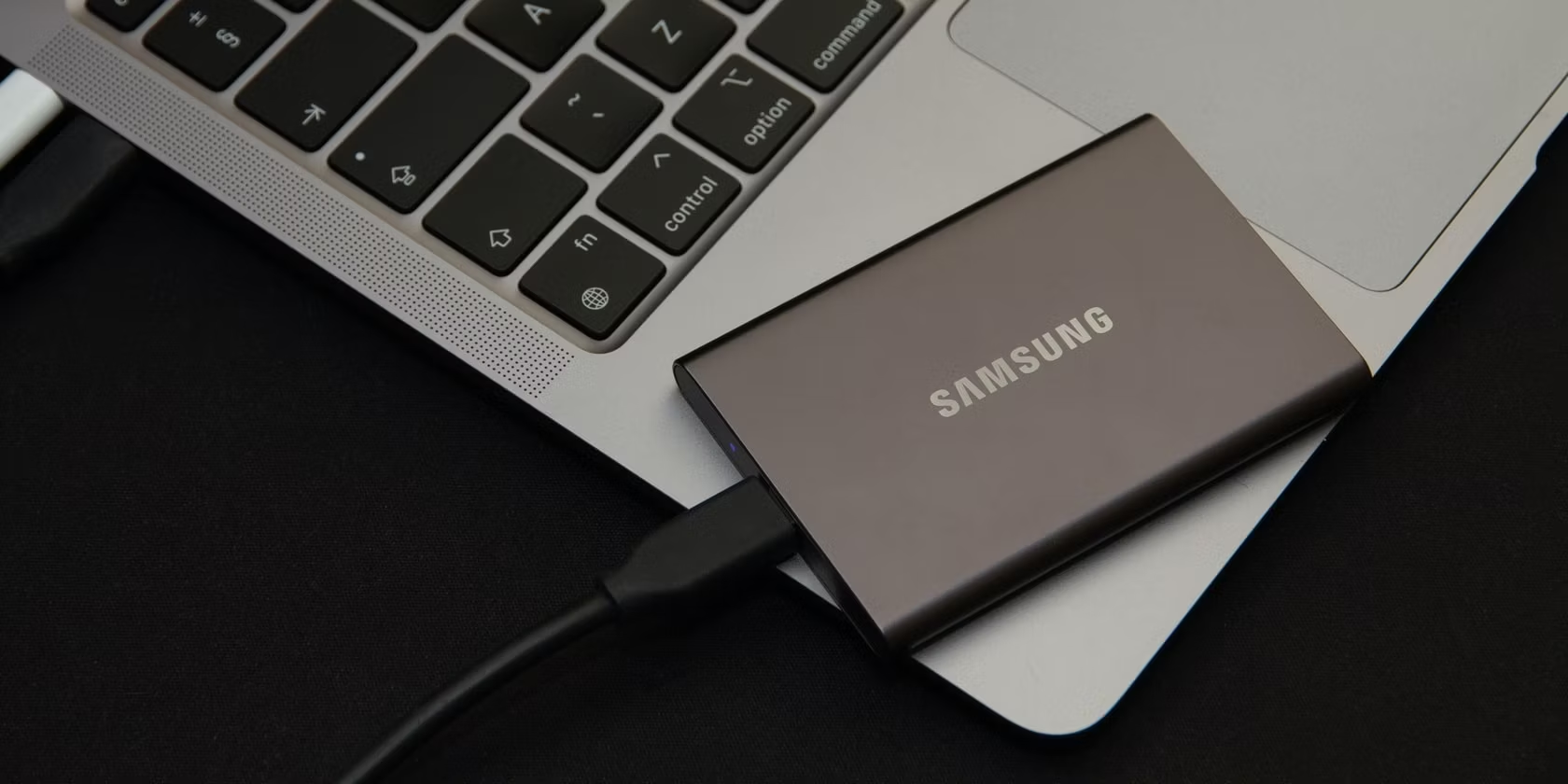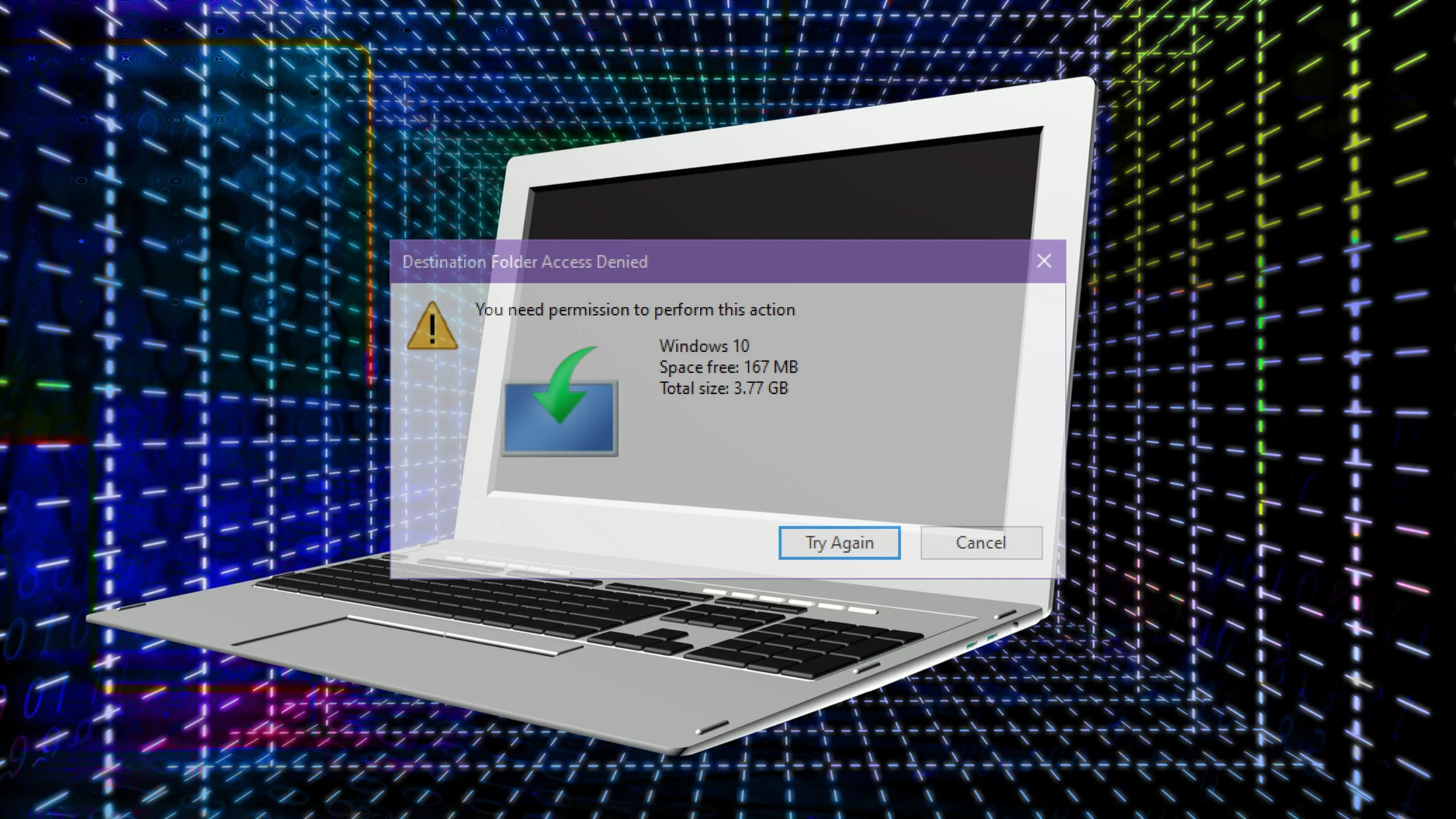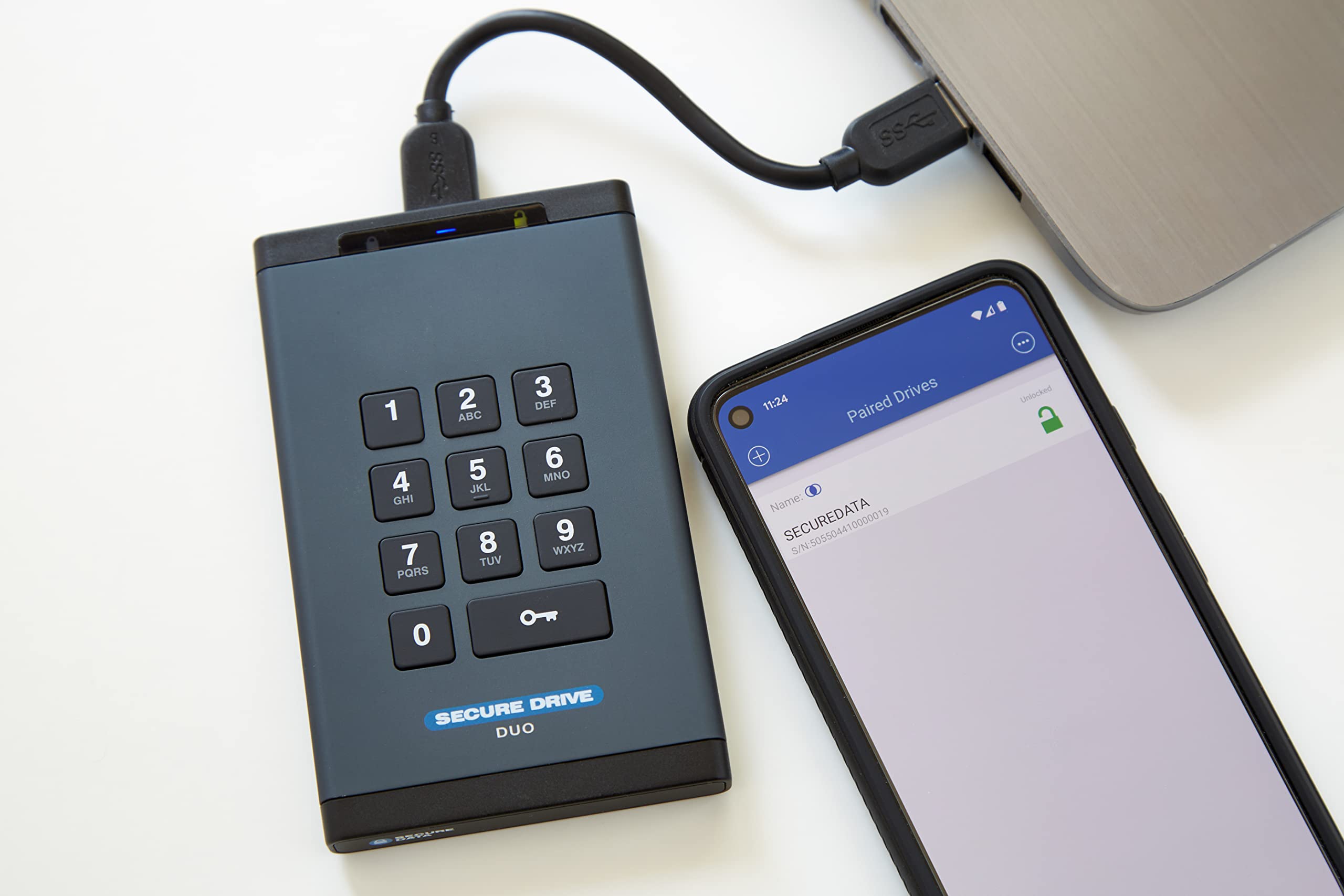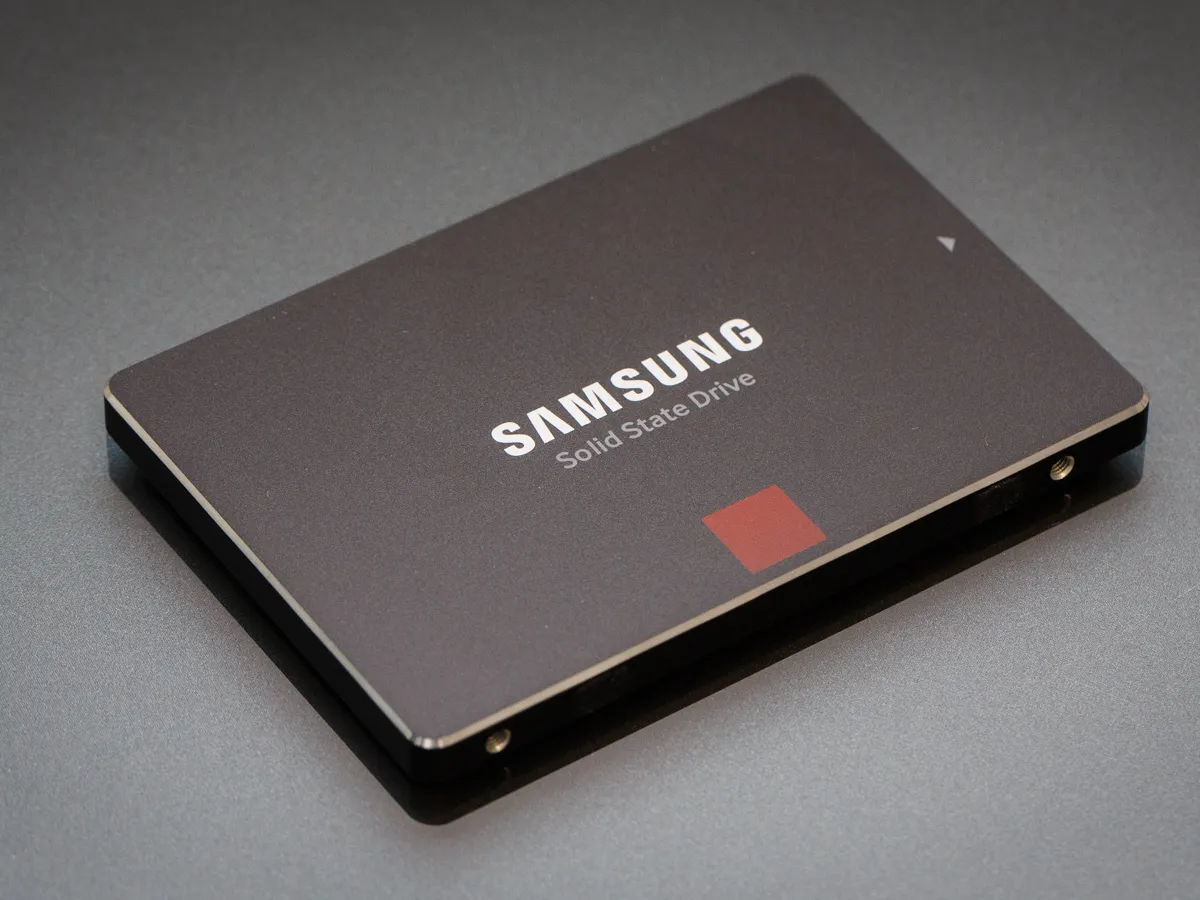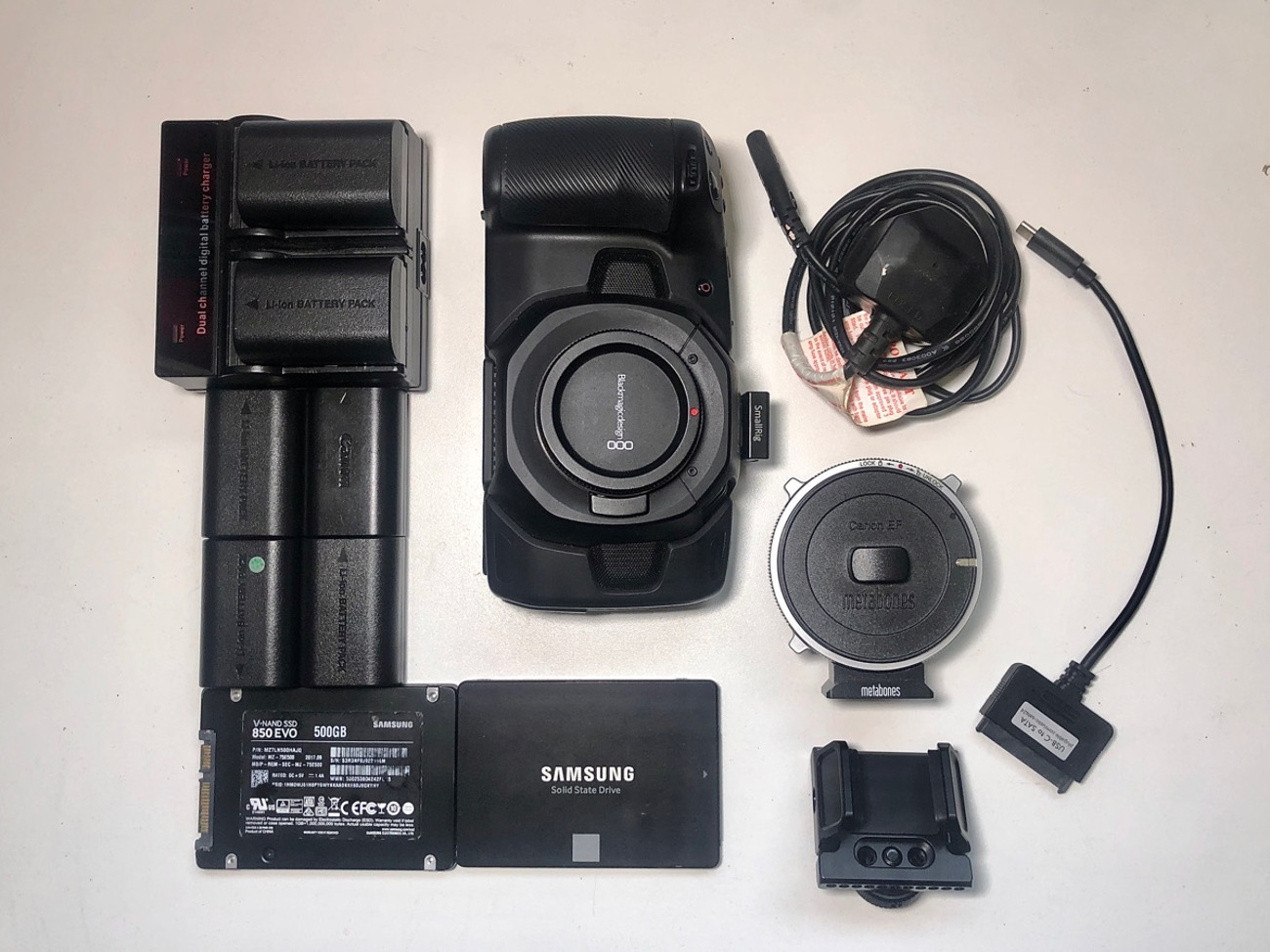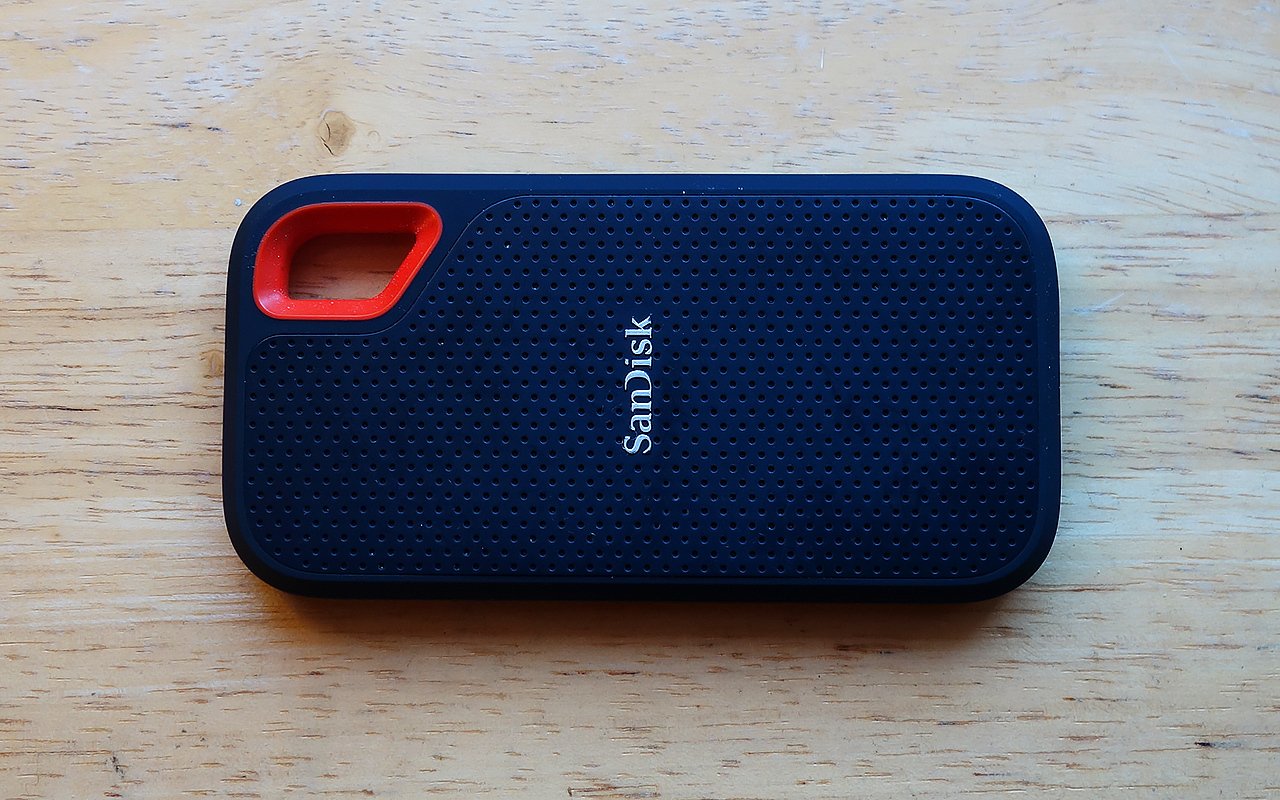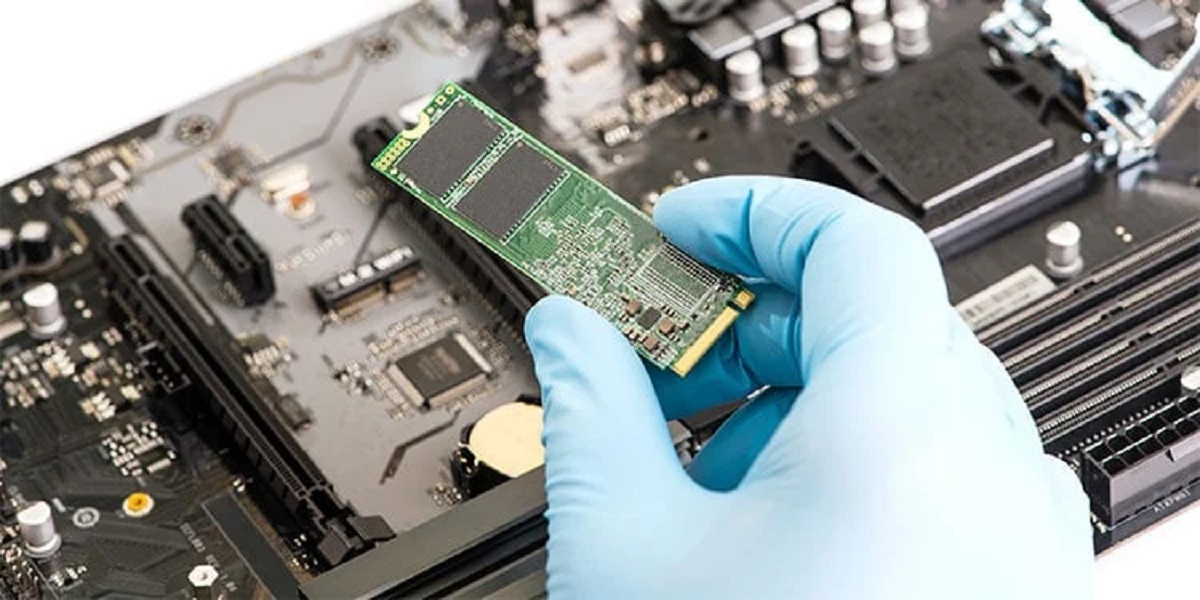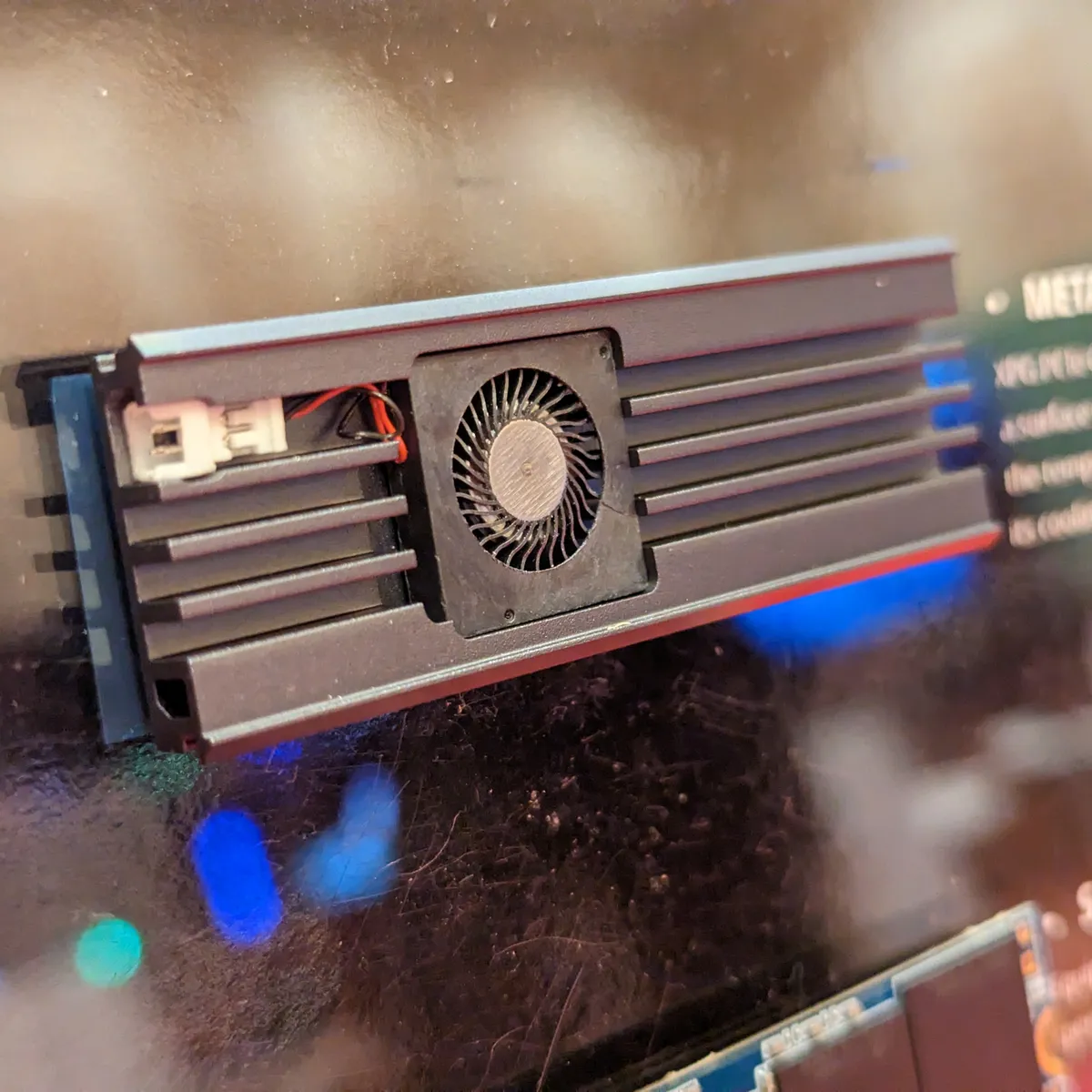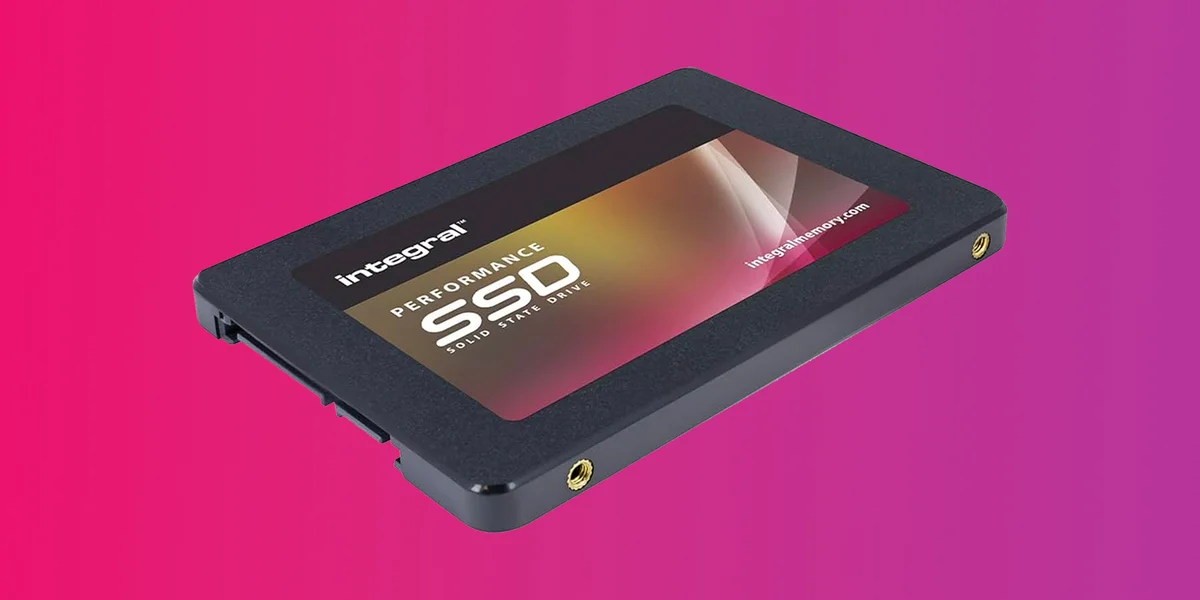Introduction
Welcome to this guide on how to remove write protection from your SSD. If you’re encountering issues where you cannot modify or write data to your SSD, it is likely that write protection has been enabled. Write protection is a security feature that prevents accidental modification or deletion of important files on a storage device. However, in some cases, write protection can be mistakenly enabled or become stuck, causing inconvenience for users who need to make changes to their SSD.
While write protection is a valuable feature, there are situations where you may need to remove it to regain the ability to write or modify data on your SSD. This guide will walk you through various methods to remove write protection from your SSD, ranging from checking for physical write protection mechanisms to utilizing software tools.
Before diving into the methods, it’s important to understand why your SSD might be write protected. There are several reasons for this, including firmware issues, software settings, or a malfunctioning drive. By identifying the cause, you can determine the most effective method to remove the write protection.
Please note that removing write protection from your SSD involves making changes to your system settings or drive firmware, which can carry risks if not done correctly. It is recommended to proceed with caution and ensure you have a backup of any important data before attempting any of the methods discussed in this guide.
Now that we have a brief overview of the purpose and potential risks involved in removing write protection from your SSD, let’s move on to the next section, where we will explore how to check for physical write protection mechanisms on your SSD.
Reasons for write protection on SSD
There can be several reasons why your SSD is write protected. Understanding these reasons can help you troubleshoot the issue and determine the appropriate method to remove the write protection. Here are some common causes:
- Physical Write Protection: Some SSDs come with physical write protection switches or covers. These switches are designed to prevent accidental modification or deletion of data. If your SSD has a physical write protection mechanism, check if it is enabled or damaged.
- Firmware Issues: Outdated or corrupted firmware can sometimes cause write protection on SSDs. Firmware is the software embedded within the SSD that controls its functioning. In such cases, updating the SSD firmware can resolve the write protection issue.
- Software Settings: Certain software settings or configurations can enable write protection on your SSD. For example, some security software or system utilities have options to prevent write access to certain drives or partitions. Check your system settings and security software to ensure they are not causing the write protection.
- Malfunctioning Drive: In rare cases, the write protection issue could be due to a malfunctioning SSD. This could be a result of physical damage or hardware failure. Running diagnostic tests or checking the health of your SSD can help identify if the drive is the root cause of the problem.
Identifying the specific cause of write protection on your SSD is crucial in order to apply the appropriate solution. In the following sections, we will discuss different methods to remove the write protection, depending on the cause. Whether it’s disabling physical write protection, modifying software settings, updating firmware, or other techniques, we will guide you through step-by-step processes to resolve the issue. So, let’s move on to the next section and check for physical write protection mechanisms on your SSD.
Checking for Physical Write Protection
If your SSD has a physical write protection mechanism, it’s important to check if it is enabled or damaged. Physical write protection switches or covers are designed to prevent accidental modifications to your SSD. Here’s how you can check for physical write protection:
- Inspect the SSD: Take a close look at your SSD to see if there is a physical write protection switch or cover. This switch is usually located on the side or bottom of the SSD. Make sure it is in the “off” position, which allows write access to the drive. If there is a cover, ensure that it is not obstructing the switch.
- Refer to the SSD’s User Manual: If you are unsure about the presence or location of a physical write protection mechanism on your SSD, check the user manual that came with the SSD. The manual will provide detailed instructions on how to toggle the write protection switch or remove any covers.
- Consult the SSD Manufacturer: In case you cannot find the necessary information in the user manual or if you encounter any difficulties, reach out to the SSD manufacturer’s support team. They will be able to provide you with specific guidance on how to disable the physical write protection on your SSD.
If you have determined that your SSD does not have a physical write protection mechanism or if the mechanism is already disabled, and you are still experiencing write protection issues, then the write protection is likely caused by a different factor, such as firmware settings or software configurations. In the next sections, we will explore various methods to remove write protection using software-based solutions. So, let’s proceed to the next section where we will discuss different methods to remove write protection from your SSD.
Removing Write Protection Using Software Methods
If the write protection on your SSD is not caused by a physical mechanism, there are several software-based methods you can try to remove it. These methods involve modifying settings, updating firmware, formatting the SSD, or using third-party software tools. Let’s explore each method in detail:
- Method 1: Modifying the Registry Settings: Changing certain registry settings can help disable write protection on your SSD. However, it is important to exercise caution when modifying the registry as incorrect changes can lead to system issues. Follow a reliable guide or seek assistance to ensure you make the necessary changes safely.
- Method 2: Using Diskpart Command Prompt: Diskpart is a command-line utility in Windows that allows you to manage storage devices. By using Diskpart, you can remove write protection from your SSD. This method involves running specific commands in the Command Prompt. Make sure to follow a comprehensive guide or tutorial to execute the commands correctly.
- Method 3: Updating SSD Firmware: Outdated or corrupted firmware can sometimes be the cause of write protection. Check the manufacturer’s website for any available firmware updates for your SSD model. Follow the instructions provided by the manufacturer to update the firmware, as the process can vary for different SSD brands.
- Method 4: Formatting the SSD: Formatting your SSD can help remove write protection, but it will erase all data on the drive. Be sure to back up any important files before proceeding. You can format the SSD using the built-in Disk Management tool in Windows or third-party partition management software.
- Method 5: Using Third-Party Software Tools: There are various third-party software tools available that can help remove write protection from your SSD. These tools often provide a user-friendly interface and automate the process, making it easier for users. Research and find a reliable tool that is compatible with your SSD model and follow the instructions provided by the software.
Remember to proceed with caution when using software methods to remove write protection. It is recommended to back up your data before attempting any modifications to avoid any potential data loss. In the next section, we will discuss some precautions you should take while removing write protection from your SSD. So, let’s continue and learn about the precautions to safeguard your data and ensure a successful write protection removal.
Method 1: Modifying the Registry Settings
One method to remove write protection from your SSD involves modifying specific registry settings. However, please note that modifying the registry can have consequences if not done correctly. It is recommended to create a backup of your registry before proceeding. Here’s how you can attempt this method:
- Press Windows Key + R: Open the Run dialog box by pressing the Windows key and R simultaneously. Type “regedit” and hit Enter to open the Registry Editor.
- Navigate to the WriteProtect Key: In the Registry Editor, navigate to the following key: HKEY_LOCAL_MACHINE\SYSTEM\CurrentControlSet\Control\StorageDevicePolicies. If the “StorageDevicePolicies” key does not exist, you may need to create it.
- Modify the WriteProtect Value: Double-click on the “WriteProtect” value located in the right pane of the Registry Editor. Change the value data to “0” to disable write protection. If the value does not exist, you can create it as a DWORD value with a value of “0”.
- Reboot Your System: After making the necessary changes to the registry, close the Registry Editor and restart your computer for the changes to take effect.
It is important to note that modifying the registry is a delicate process, and any incorrect changes can cause system instability or other issues. If you are unsure or uncomfortable with editing the registry, it might be best to seek assistance from an experienced user or consider other methods to remove write protection from your SSD.
In the next section, we will discuss another software-based method to remove write protection using the Diskpart command prompt. This method involves using a command-line utility in Windows to manage storage devices. Let’s proceed to the next section to learn about this method.
Method 2: Using Diskpart Command Prompt
Another method to remove write protection from your SSD is by using the Diskpart command prompt utility in Windows. Diskpart allows you to manage and configure storage devices, including removing write protection. Here’s how you can attempt this method:
- Open the Command Prompt as Administrator: Right-click on the Start menu and select “Command Prompt (Admin)” to open the Command Prompt with administrative privileges.
- Type the Diskpart Command: In the Command Prompt window, type “diskpart” and press Enter to launch the Diskpart utility.
- List the Disks: Once in the Diskpart utility, type “list disk” and press Enter. This will display all the storage disks connected to your computer.
- Select the Target Disk: Identify the disk number of your SSD from the list and type “select disk X” (replace X with the appropriate disk number) and press Enter.
- Remove Write Protection: To remove write protection, type “attributes disk clear readonly” and press Enter. This command clears the write protection attribute on the selected disk.
- Exit Diskpart: After successfully removing write protection, type “exit” and press Enter to exit the Diskpart utility.
Once you have completed these steps, restart your computer for the changes to take effect. The write protection on your SSD should now be removed, allowing you to write and modify data on the drive.
Please note that the Diskpart utility is a powerful tool, and any incorrect commands or operations can lead to data loss or other issues. Be cautious and double-check the disk number before executing commands. If you are unsure about using the Diskpart utility, it may be best to seek assistance from a knowledgeable individual or consider alternative methods to remove write protection.
In the next section, we will discuss another method involving updating the firmware of your SSD. This can often resolve write protection issues caused by firmware-related matters. Let’s proceed to the next section to learn more about it.
Method 3: Updating SSD Firmware
Updating the firmware of your SSD can help resolve write protection issues caused by outdated or corrupt firmware. Firmware acts as the internal software that controls the functioning of your SSD. Manufacturers often release firmware updates to address bugs, improve performance, and fix compatibility issues. Here’s how you can update the firmware of your SSD:
- Identify Your SSD Model: Firstly, identify the model of your SSD. You can usually find this information on the SSD itself or by checking the manufacturer’s website.
- Visit the Manufacturer’s Website: Go to the manufacturer’s website and look for their support or downloads section. Search for the firmware updates specific to your SSD model.
- Download the Firmware Update: Download the latest firmware update for your SSD. It is crucial to ensure that you are downloading the correct firmware update for your specific SSD model.
- Follow the Manufacturer’s Instructions: Once the firmware update file is downloaded, carefully read the instructions provided by the manufacturer. Different manufacturers may have slightly different procedures for updating SSD firmware.
- Perform the Firmware Update: Typically, you will need to run the firmware update software and follow the on-screen prompts to update the firmware of your SSD. During the update process, make sure that the SSD is connected to your computer and that you do not interrupt the update.
- Restart Your System: After successfully updating the firmware, restart your computer to allow the changes to take effect.
Updating the firmware of your SSD can improve its performance and address various issues, including write protection. However, it is essential to carefully follow the manufacturer’s instructions and ensure that you are using the correct firmware update for your SSD model.
In the next section, we will explore another method to remove write protection from your SSD, which involves formatting the drive. This method should only be attempted if you have backed up your important data from the SSD. Let’s continue to the next section to learn more about it.
Method 4: Formatting the SSD
Formatting your SSD can be a solution to removing write protection, but it is important to note that this method will erase all data on the drive. Therefore, it is crucial to back up any important files before proceeding. Here’s how you can format your SSD:
- Open Disk Management: Right-click on the Start menu and select “Disk Management” to open the Disk Management tool in Windows.
- Locate the SSD: In the Disk Management window, locate your SSD. It will be listed as a disk with a specific capacity and drive letter.
- Right-click on the SSD: Right-click on the SSD and select “Format” from the context menu. This will open the Format dialog box.
- Choose File System and Allocation Unit Size: In the Format dialog box, select the desired file system (such as NTFS or exFAT) and the allocation unit size. You can also provide a volume label for the SSD.
- Enable Quick Format (Optional): If you wish to perform a quick format, tick the box next to “Quick Format.” This option speeds up the formatting process but does not thoroughly check for disk errors.
- Confirm and Start the Format: Double-check your settings and click on the “OK” button to start the formatting process. Formatting may take some time, depending on the size of your SSD.
- Wait for the Formatting to Complete: Once the formatting process is complete, you will receive a notification. Your SSD is now formatted and free from write protection.
It’s important to emphasize once again that formatting your SSD will erase all data on the drive. Therefore, it is crucial to back up any important files before proceeding with the format.
In the next section, we will discuss another method to remove write protection from your SSD, which involves using third-party software tools. These tools can provide additional options and features for removing write protection. Let’s proceed to the next section to learn more about it.
Method 5: Using Third-Party Software Tools
If the previous methods have not resolved the write protection issue on your SSD, you can consider using third-party software tools specifically designed for managing storage devices. These tools offer additional features and options to remove write protection. Here is how you can attempt this method:
- Research and Identify Reliable Software: Look for reputable and reliable third-party software tools that are designed for removing write protection from SSDs. Some popular options include EaseUS Partition Master, AOMEI Partition Assistant, and MiniTool Partition Wizard.
- Download and Install the Selected Software: Visit the official website of the chosen software tool and download the appropriate version for your operating system. Follow the installation instructions to install the software on your computer.
- Open the Software: Launch the software tool after installation. You will typically be greeted with a user-friendly interface displaying the connected storage devices.
- Select the SSD: Identify your SSD from the list of available drives within the software interface. Ensure that you have selected the correct drive to avoid any accidental modifications to other drives.
- Explore Write Protection Removal Options: Navigate through the software’s options and features to find the specific option for removing write protection on your SSD. The location and labeling may vary depending on the software tool you are using. Follow the on-screen instructions provided by the software.
- Follow the Software’s Guidelines: Pay close attention to any additional instructions or warnings provided by the software tool. These instructions will help you safely remove write protection without causing any unintended consequences.
- Apply Changes and Restart: After successfully removing write protection using the third-party software tool, click on the appropriate button to apply the changes. Once the changes are applied, restart your computer to ensure that the write protection has been completely removed.
It is essential to use reputable third-party software tools from trusted sources and always exercise caution when making modifications to your SSD. Double-check the instructions provided by the software tool and ensure that you have backed up any important data before proceeding.
Now that we have explored various methods to remove write protection from your SSD, it’s important to address the precautions you should take while performing these methods. In the next section, we will discuss the precautions to safeguard your data and ensure a successful write protection removal process.
Precautions to Take While Removing Write Protection
When removing write protection from your SSD, it is crucial to take certain precautions to safeguard your data and ensure a successful process. Here are some important precautions to keep in mind:
- Backup Your Data: Before attempting any method to remove write protection, it is highly recommended to create backups of your important data. This ensures that you have a copy of your files in case of any accidental data loss during the process.
- Follow Instructions Carefully: Whether you are modifying registry settings, using command prompt utilities, updating firmware, formatting the SSD, or using third-party software tools, it is vital to carefully read and follow the provided instructions. Any incorrect steps or settings can potentially lead to data loss or system instability.
- Use Reliable Software and Sources: If you are using third-party software tools, ensure that you download them from reputable sources. Stick with well-known software providers to reduce the risk of downloading malicious software or tools that may harm your system or compromise your data.
- Double-Check the Drive: Always verify that you are performing operations on the correct SSD drive. Mistakenly applying changes to the wrong drive can result in permanent data loss.
- Keep Power Supply Stable: Ensure that your computer and SSD are connected to a stable power supply during the write protection removal process. Any sudden power loss can potentially corrupt the SSD or lead to data loss.
- Seek Professional Help if Unsure: If you are uncertain about any steps or settings during the write protection removal process, it is best to seek assistance from professionals or experienced individuals who can guide you properly.
By taking these precautions, you can minimize the risks associated with removing write protection from your SSD and increase the chances of a successful outcome. Remember that each method has its own set of risks and potential challenges, so proceed with caution and perform adequate research beforehand.
Now that we have discussed the precautions to consider, it’s time to wrap up this guide on removing write protection from your SSD. Let’s conclude the article in the next section.
Conclusion
In this guide, we have explored various methods to remove write protection from your SSD. Whether it involves checking for physical write protection mechanisms, modifying registry settings, using the Diskpart command prompt, updating firmware, formatting the SSD, or utilizing third-party software tools, each method offers a different approach to address the write protection issue.
When encountering write protection on your SSD, it is important to identify the cause, as it can vary from physical switches to firmware settings or software configurations. By understanding the root cause, you can choose the most appropriate method to remove the write protection and regain the ability to write and modify data on your SSD.
Throughout these methods, we have emphasized the importance of taking precautions to safeguard your data. Creating backups, following instructions carefully, using reliable software and sources, double-checking the drive, maintaining a stable power supply, and seeking professional help when needed are all essential steps to ensure a successful write protection removal process.
Remember that removing write protection involves making changes to your SSD or system settings, which can carry risks if not done correctly. Always proceed with caution and be sure to have backups of your important data before attempting any modifications.
We hope that this guide has provided you with the necessary knowledge and steps to remove write protection from your SSD. If you are still experiencing issues or if the write protection persists, it may be advisable to consult with your SSD manufacturer’s support team or seek further technical assistance to resolve the problem.
Thank you for reading, and we hope your journey to remove write protection from your SSD is successful!







